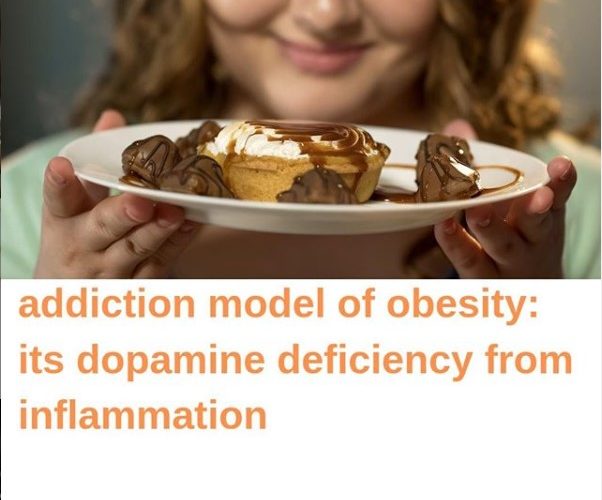An explanation why motivation is reduced with metainflammation and a possible explanation why many patients with diabetes develop chronic pain pathologies with anhedonia, reflections on the addiction model of obesity.
The brain’s dopamine system, which drives motivation, is directly affected by chronic, low-grade inflammation. If your brain perceives that it is fighting off an infection or healing a wound, your brain recalibrates your motivation to do other things, so you don’t use up too much of your energy. This immune system mechanism regulates the use of energy resources during times of acute stress was likely adaptive in our ancestral environments, but the same mechanism to conserve energy for the immune system could become maladaptive when many people are less physically active and may have low-grade inflammation due to factors such as chronic stress, obesity, metabolic syndrome, or chronic pain.
Inflammatory cytokines have been shown to have a direct effect on mesolimbic dopamine (DA) that is associated with a reduced willingness to expend effort for reward. “the metabolic demands of chronic low-grade inflammation induce a reduction of striatal DA that in turn leads to a steeper effort-discounting curve because of reduced perceived ability (can’t) versus preference (won’t) for reward” ultimately contributing to motivational impairments
Michael T. Treadway, Jessica A. Cooper, Andrew H. Miller. Can’t or Won’t? Immunometabolic Constraints on Dopaminergic Drive. Trends in Cognitive Sciences, 2019; 23 (5): 435 DOI: 10.1016/j.tics.2019.03.003






